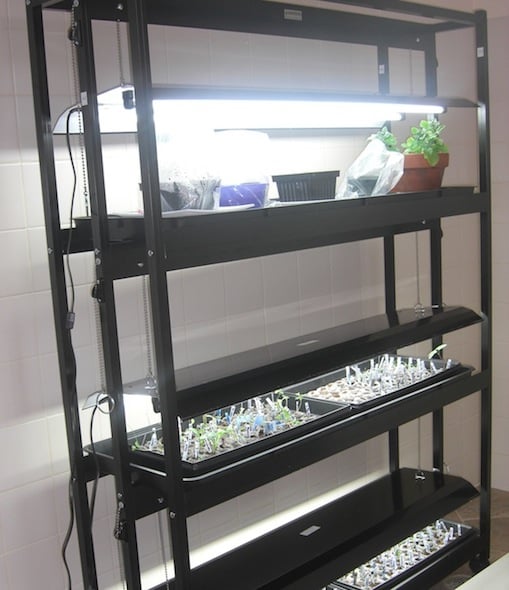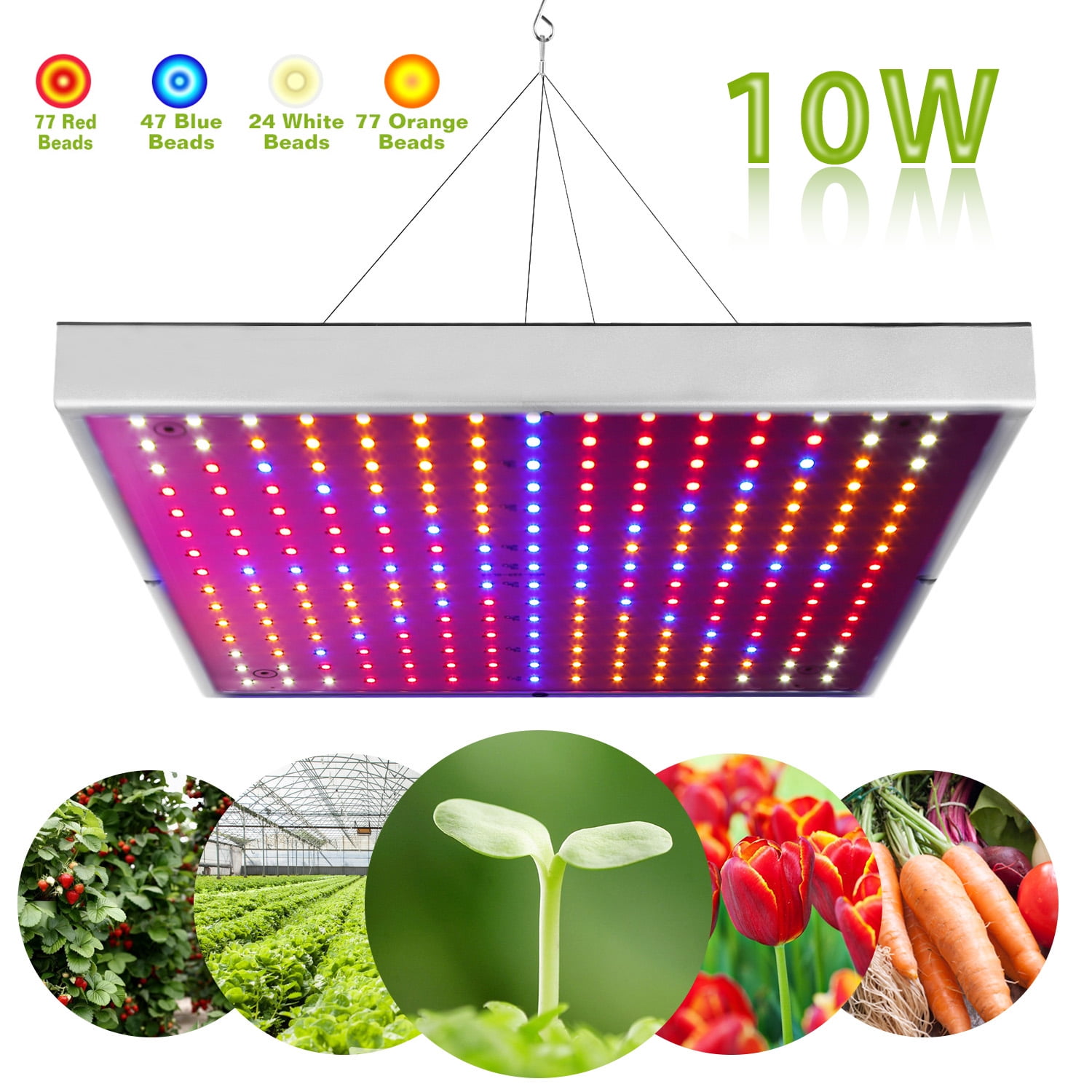
How much of the light in the wavelengths that is useful to plants is called the light Quality. If a light source has mostly wavelengths that a plant can use well, it will require less time to fill the plant’s “light bucket” than a light source of the same intensity with a lot of wavelengths the plant can’t use. Plants use some wavelengths of light very well, other wavelengths not so well, and other wavelengths not at all. The plant can only use the water and not the mud, so if the hose gives a lot of mud it needs to run longer to put out the same amount of water as one that has less mud. To take our bucket analogy further, imagine that there are things coming out of the “hose” (light source) other than water, say, mud particles. We measure Intensity as the number of photons that hit a square meter every second, and we count the photons in moles. How much light the light source gives every second is called the light Intensity.
#GROW LIGHTS FOR VEGETABLE SEEDLINGS FULL#
A tomato seedling may have its light bucket filled for the day in just five hours in full sun, whereas the same plant may need 22 hours of a fluorescent light, just because there are so many more photons coming out of the sun every second than out of the fluorescent light.Ī source can give too much light every second, too, like trying to fill the bucket in a few seconds with a fire hose the plant can’t use that much water at once and most of it is wasted, perhaps even damaging the plant. In this analogy, different light sources (whether the sun or lamps) put out different quantities of light.

We measure DLI as the number of photons that hit a square meter over the course of the day, and we count the photons in “moles." How much light a plant receives over the course of a day is called its “Daily Light Integral” (DLI). In seedlings, this looks like stretched, thin plants with lots of space between the leaves. For example, a growing pepper seedling has a smaller light bucket than a pepper plant, which is ripening fruit.Ī plant which day after day doesn’t get its bucket filled can’t grow properly. The same plant can have different light buckets at different times of its life. Sun loving plants, like tomatoes, have bigger buckets. Shade tolerant plants, like ferns, have smaller buckets. For optimum growth, a plant needs to have its light bucket filled every day.

Light Requirements For PlantsĪ plant’s need for light can be thought of like a bucket being filled with water, where the different light sources are different hoses. We see the different visible wavelengths as different colors, and we see all the visible wavelengths mixed together as white.

We measure them by how long they are (called wavelength). We can count the particles (called photons), andĢ.

This fact sheet will address some of the questions and challenges about growing seedlings with artificial light while helping to understand light and how it is perceived and used by a plant.įirst, one quick bit of science: light acts both like particles and like waves.
#GROW LIGHTS FOR VEGETABLE SEEDLINGS HOW TO#
Knowing how to use artificial lighting to grow seedlings can be challenging. Doing it indoors, however, also requires the use of artificial lights. Doing this indoors can save the cost of buying, heating and maintaining a greenhouse. Many farmers and homeowners grow their own seedlings for transplant.


 0 kommentar(er)
0 kommentar(er)
